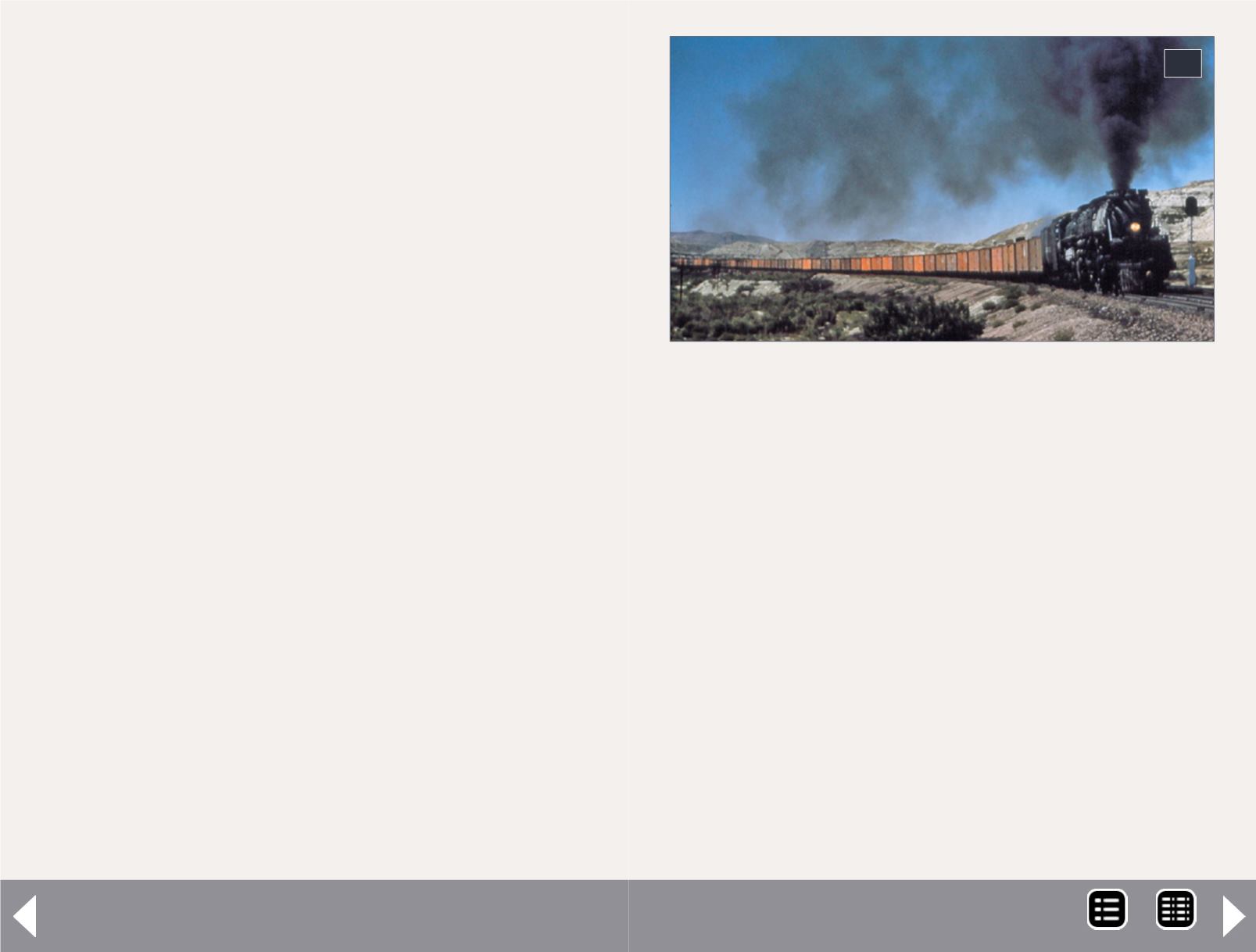
that time, in the first two columns. I have omitted a few rela-
tively rare car groups.
The next two columns to the right identify the PFE car class of
each number group (nomenclature is explained in a footnote),
and the year(s) built or rebuilt.
Finally, the three columns at the right show how a model car
fleet might be proportioned if one chooses to have approxi-
mately one model for each 1000 prototype cars. The next col-
umn to the right shows the same idea, but for one model to
each 3000 PFE cars, to reduce the number of needed models. I
should emphasize that these particular proportions are arbi-
trary. One could readily choose different numbers.
My own choice is to shoot for the one per 1000 set of cars. The
far right column shows that I have not rigorously done that, but
broadly speaking, have gotten into that ballpark.
Note that at the bottom, under the total number of cars shown
in the second column, I have added another line with the ac-
tual total of the complete PFE car fleet in that ORER issue. It is
only about 2% larger, meaning that the car number groups I se-
lected for Table 2 do encompass 98% of the total PFE car fleet.
Next I turn to modeling some of these specific classes shown
in Table 2. But first, I want to give an overview of paint and
lettering schemes, since these will apply to all the models in
one way or another.
“PFE policy was to repaint wood-sheathed
cars every four to six years, and steel cars ev-
ery 10 to 12 years.”
Getting Real Column - 3
Painting history
There were long stretches of time during which PFE paint
schemes remained essentially constant, and there were also pe-
riods of somewhat rapid change. For the transition-era modeler,
the latter is the case. I will present only a brief summary of the
history, along with what it means for a 1953 modeler like myself.
Those modeling other periods should, of course, construct a sim-
ilar framework for themselves.
As background, it should be recognized that PFE policy was to
repaint wood-sheathed cars every four to six years, and steel
cars every 10 to 12 years. Shop data show not only that this
policy was followed, but also that repainting was freely ap-
plied for cars even with minor repairs. And recall that the cars
18: This photo show the ceaseless movement of PFE
cars, loaded eastward near Green River, Wyoming on
September 3, 1955. An important value in this image
is the vivid depiction of the variation of weathering
among the many PFE cars.
- photo, John E. Shaw
18
MRH-Oct 2013


